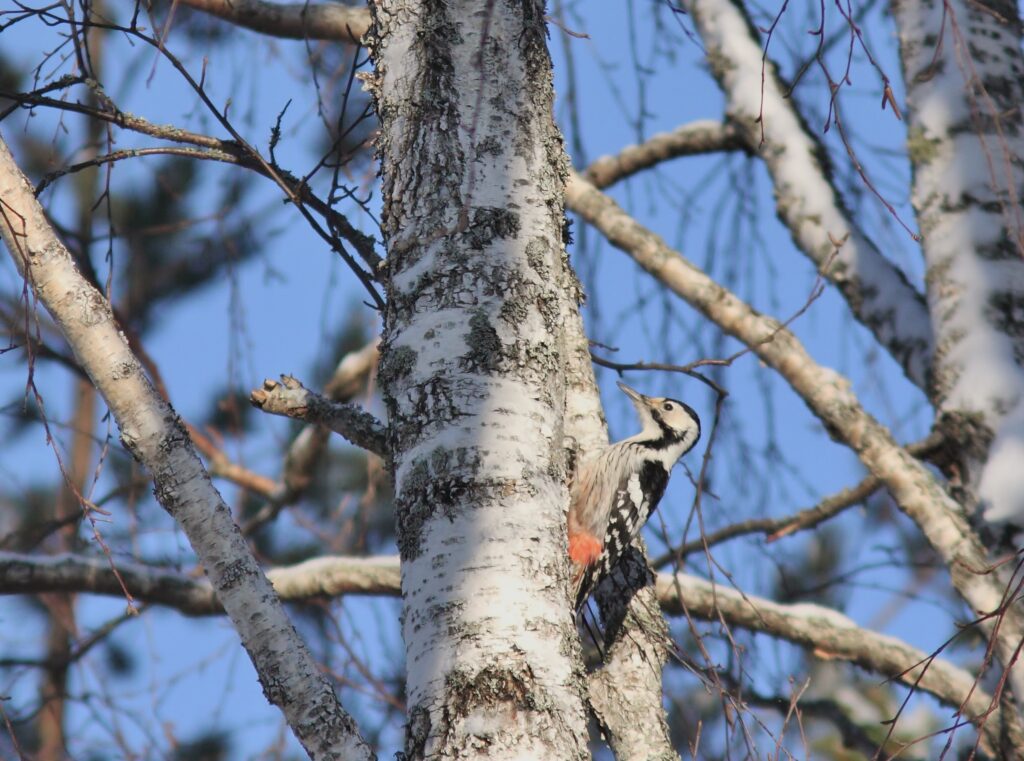Populations of white-backed woodpecker are recovering in Finland

Populations of the most endangered forest bird in Finland, the white-backed woodpecker, have recovered from the bottom reached in the 1990s, when there were only some 30 nesting pairs in Finland. Now the figure is some 170–210.
Most of the Finnish white-backed woodpeckers (Dendrocopos leucotos) live in Karelia in eastern Finland. The population has, however, spread last years to all of southern Finland and its coasts. Forestry activities have played a significant role in the recovery.
Looking back the times ten years ago, the normal way to protect the woodpecker was to protect a certain area around its nesting tree. Since then this method has proven to be inefficient.
“We found out that it is not about nesting, but about the feeding trees,” says Mr. Juha-Matti Valonen, specialist on the environment in forest industry company UPM. The company has examined the woodpecker’s survival conditions in commercial forests thoroughly and for a long time.
White-backed woodpecker stays in Finland for the winter. This is why the most critical condition for the bird is to find something to eat during winter time.
“During winter the woodpecker needs trees serving the worms of insects to eat. During summer the insects themselves are suitable food for the bird, but during winter there are only the worms living in decaying wood,” says Valonen.

The sacrifice made by forestry is not huge
The method of white-backed woodpecker to fetch its food really works in the Finnish, cold winters. However, forestry could be able to destroy the life of the bird, if it felled the feeding trees that are important for the bird.
“On the other hand, these trees are often of almost no significance for the forestry revenues. This is why it is not a problem to save them in connection with regeneration fellings,” says Valonen.
As for the white-backed woodpecker, the most important tree species are alder and goat willow, which decay very fast and thus, serve food for the woodpecker.

According to Valonen, retention trees left unfelled in connection with regeneration fellings often satisfty the needs of the bird. When this is carried out with care, many other forest species benefit as well.
More and more often the white-backed woodpecker survives in commercial forests. According to Mr. Sami Oksa, manager on the environment at the UPM, this is a good message.
”Each endangered species found in commercial forest shows that there is something where we have succeeded,” says Oksa.
Kirjoita kommentti